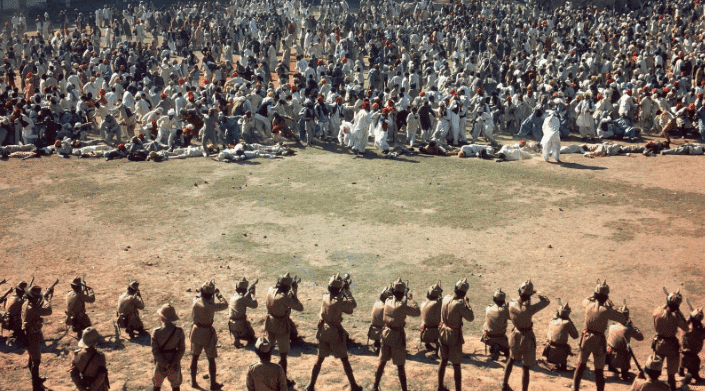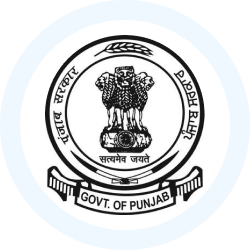PPSC PCS (Punjab) Exam > PPSC PCS (Punjab) Notes > Punjab State (PPSC) PSC: Preparation > Jallianwala Bagh Massacre
Jallianwala Bagh Massacre | Punjab State (PPSC) PSC: Preparation - PPSC PCS (Punjab) PDF Download
Introduction

In 1919, the British government arrested Dr. Satyapal and Dr. Saifuddin Kitchlew and banned Mahatma Gandhi's entry into Punjab. This led to a general strike in Amritsar on April 10, 1919. Later, on April 12, 1919, General Reginald Edward Harry Dyer, who had taken over the command of the troops in Punjab, prohibited all public meetings or gatherings.
- On April 13, 1919, a large number of men, women, and children had assembled at Jallianwala Bagh on the occasion of Baisakhi to show their resentment against the arrest of their leaders Dr. Kitchlew and Dr. Satyapal.
- Enraged, General Dyer fired 1,650 rounds of ammunition on the crowd, resulting in a bloody massacre of thousands of men, women, and children.
- The brutality of the Jallianwala Bagh tragedy shocked the country.
- Nobel Laureate Rabindranath Tagore renounced his knighthood in protest against the Jallianwala Bagh Massacre.
- The site Jallianwala Bagh became a national place of pilgrimage.
- The monument aptly named 'The Flame of Liberty' was inaugurated on April 13, 1961, by Dr. Rajendra Prasad.
- In Jallianwala Bagh, the central 30 ft high pylon (tall tower), a four-sided tapering structure of red stone standing in the midst of a shallow tank, is built with 300 slabs with the Ashoka Chakra carved on them.
- A stone lantern stands at each corner of the tank.
- On all four sides of the pylon, the words 'In Memory of Martyrs, 13th April, 1919' have been inscribed in Hindi, Punjabi, Urdu, and English.
Khilafat Movement
- The Khilafat Movement (1919-1922) was a political protest campaign led by Muhammad Ali and Shaukat Ali to oppose the British Government's stance towards the Ottoman Caliphate.
- Mahatma Gandhi viewed this as an opportunity to unite Hindus and Muslims, leading to the initiation of the Non-Cooperation Movement in support of both the Khilafat and Swaraj.
- In Punjab, Dr. Kitchlew, Niaz Hussain, and Maulavi Daud rallied against British authority to promote this movement.
Kirti Kisan Sabha
- The Kirti Kisan Sabha was established on April 12, 1928, to organize agriculturalists, industrial workers, and low-paid urban laborers for revolutionary activities. Funded by the Ghadar Party, it emerged from the Kirti Movement initiated by Bhai Santokh Singh in 1927, who was a Ghadar leader educated in Soviet Russia.
- Initially, the Sabha aimed to prepare the masses for action and spread propaganda through the press, launching a monthly magazine in Punjabi called The Kirti in February 1926. The Sabha continued to disseminate Communist ideas and advocate for revolt against British imperialism. The Kirti Kisan Conference held on March 4, 1931, at Anandpur Sahib during the Hola Mohalla festival, urged workers and peasants to establish Sabha units in villages.
The document Jallianwala Bagh Massacre | Punjab State (PPSC) PSC: Preparation - PPSC PCS (Punjab) is a part of the PPSC PCS (Punjab) Course Punjab State (PPSC) PSC: Preparation.
All you need of PPSC PCS (Punjab) at this link: PPSC PCS (Punjab)
|
23 videos|50 docs|47 tests
|
Related Searches
















